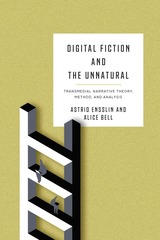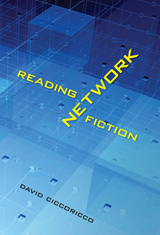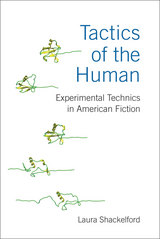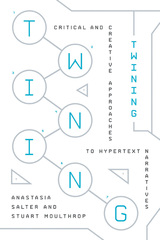4 books about Hypertext fiction

Digital Fiction and the Unnatural
Transmedial Narrative Theory, Method, and Analysis
Astrid Ensslin and Alice Bell
The Ohio State University Press, 2021
Digital Fiction and the Unnatural: Transmedial Narrative Theory, Method, and Analysis offers the first comprehensive and systematic theoretical, methodological, and analytical examination of unnatural narratology as a medium-specific and transmedial phenomenon. It applies and adapts key concepts of narrative theory and analysis to digital-born fictions ranging from hypertext and interactive fiction to 3D-narrative video games, app fiction, and virtual reality. The book addresses the unique affordances of digital fiction by focusing on multilinearity and narrative contradiction, interactional metalepsis, impossible time and space, “extreme” digital narration, and medium-specific forms of textual “you.” In so doing, the book refines, critiques, and expands unnatural, cognitive, and transmedial narratology by placing the form of these new narratives front and center.
[more]

Reading Network Fiction
David Ciccoricco
University of Alabama Press, 2007
The marriage of narrative and the computer dates back to the 1980s, with the hypertext experiments of luminaries such as Judy Malloy and Michael Joyce. What has been variously called "hypertext fiction," "literary hypertext," and "hyperfiction" has surely surrendered any claim to newness in the 21st century.
David Ciccoricco establishes the category of "network fiction" as distinguishable from other forms of hypertext and cybertext: network fictions are narrative texts in digitally networked environments that make use of hypertext technology in order to create emergent and recombinant narratives. Though they both pre-date and post-date the World Wide Web, they share with it an aesthetic drive that exploits the networking potential of digital composition and foregrounds notions of narrative recurrence and return.
Ciccoricco analyzes innovative developments in network fiction from first-generation writers Michael Joyce (Twilight, a symphony, 1997) and Stuart Moulthrop (Victory Garden, 1991) through Judd Morrissey’s The Jew's Daughter (2000), an acclaimed example of digital literature in its latter instantiations on the Web. Each investigation demonstrates not only what the digital environment might mean for narrative theory but also the ability of network fictions to sustain a mode of reading that might, arguably, be called "literary." The movement in the arts away from representation and toward simulation, away from the dynamics of reading and interpretation and toward the dynamics of interaction and play, has indeed led to exaggerated or alarmist claims of the endangerment of the literary arts. At the same time, some have simply doubted that the conceptual and discursive intricacy of print fiction can migrate to new media. Against these claims, Reading Network Fiction attests to the verbal complexity and conceptual depth of a body of writing created for the surface of the screen.
[more]

Tactics of the Human
Experimental Technics in American Fiction
Laura Shackelford
University of Michigan Press, 2015
Tactics of the Human returns to American fiction published during the 1990s, formative years for digital cultures, to reconsider these narratives’ comparative literary print methods of critically engaging with digital technologies and their now ubiquitous computation-based modes of circulation, scenes of writing, and social spaces. It finds that fiction by John Barth, Shelley Jackson, Leslie Marmon Silko, Ruth L. Ozeki, and Jeffrey Eugenides, by creatively transposing digital writing, material formats, and spatiotemporal orientations into print, registers shifting relations to technologies at multiple sites and scales. Grappling with the digital practices catalyzed by post–World War II biological, information, and systems theory, these literary narratives tactically enlist, and enable speculative diagnoses of, emerging relations to digital technologies. Their experimental technics comparatively retrace emerging relations to the digital as these impact American nationalisms and their transnational economic networks; processes of gendering and racialization that remain crucial to differential discourses of the human; and as they enter, unnoticed, into micropractices of everyday life and lived space.
In the midst of expanding technoscientific processes of digital de- and re-materialization that render multiple, charged boundaries of the human increasingly plastic, Tactics of the Human illustrates why it is ever more crucial to query and assess the divergent (re)understandings of the human now categorized, quite loosely, as posthumanisms with particular attention to women’s, subalterns’, and other knowledges already considered liminal to the human. It identifies here and pursues strains of systems thinking, informed by feminist, new materialist, queer, and subaltern understandings of material practices, revealing why these are so pivotal to ongoing efforts to assess current limits to digital technics and expand upon their biological, cultural, social, and poetic potentialities.
[more]

Twining
Critical and Creative Approaches to Hypertext Narratives
Anastasia Salter
Amherst College Press, 2021
Hypertext is now commonplace: links and linking structure nearly all of our experiences online. Yet the literary, as opposed to commercial, potential of hypertext has receded. One of the few tools still focused on hypertext as a means for digital storytelling is Twine, a platform for building choice-driven stories without relying heavily on code. In Twining, Anastasia Salter and Stuart Moulthrop lead readers on a journey at once technical, critical, contextual, and personal. The book’s chapters alternate careful, stepwise discussion of adaptable Twine projects, offer commentary on exemplary Twine works, and discuss Twine’s technological and cultural background. Beyond telling the story of Twine and how to make Twine stories, Twining reflects on the ongoing process of making.
"While there have certainly been attempts to study Twine historically and theoretically... no single publication has provided such a detailed account of it. And no publication has even attempted to situate Twine amongst its many different conversations and traditions, something this book does masterfully." —James Brown, Rutgers University, Camden
"While there have certainly been attempts to study Twine historically and theoretically... no single publication has provided such a detailed account of it. And no publication has even attempted to situate Twine amongst its many different conversations and traditions, something this book does masterfully." —James Brown, Rutgers University, Camden
[more]
READERS
Browse our collection.
PUBLISHERS
See BiblioVault's publisher services.
STUDENT SERVICES
Files for college accessibility offices.
UChicago Accessibility Resources
home | accessibility | search | about | contact us
BiblioVault ® 2001 - 2024
The University of Chicago Press









